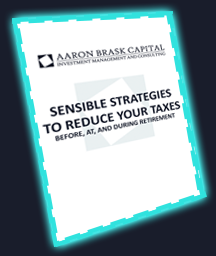Is it possible to simultaneously reduce risk, taxes, and fees while improving performance and transparency? I think so. Below I describe my building blocks approach to target a robust and growing stream of income.
Retirement Income
 My building blocks approach to income provides a refreshing alternative to the statistical approaches used by most other advisors. This approach effectively pre-chisels much of your retirement income upfront. This can reduce future chiseling away from your portfolio that leaves you at the mercy of the market.
My building blocks approach to income provides a refreshing alternative to the statistical approaches used by most other advisors. This approach effectively pre-chisels much of your retirement income upfront. This can reduce future chiseling away from your portfolio that leaves you at the mercy of the market.
The first step is to use the low-risk side of your portfolio to purchase a baseline of income. This income should last as long as you live - basically serving as a personal pension. The second step is to focus the riskier side of your portfolio on high-quality stocks. I typically prefer stocks that have paid and increased their dividends for 10 years or more.
We have now created a level stream of income from the low-risk side of the portfolio. We have also targeted an increasing stream of income from the stock dividends. Intuitively, you can think about just stacking these sources of income like building blocks.
Rather than chipping away at the principal to generate synthetic dividends, this approach lets the portfolio generate your income naturally. This can mitigate, if not eliminate, the need for portfolio management. As a result, this can significantly reduce costs. Moreover, less rebalancing translates into fewer capital gains - thereby increasing tax efficiency too.
More information
If you are thinking about retirement, you might find these links helpful:
If you would like to discuss your investment or planning needs, book a free consultation with me using the button below:
Low Costs
 My building blocks approach to income can mitigate or possibly eliminate the need for portfolio management. As such, one may not need to pay an advisor to rebalance or manage their portfolio. This alone can create significant cost savings.
My building blocks approach to income can mitigate or possibly eliminate the need for portfolio management. As such, one may not need to pay an advisor to rebalance or manage their portfolio. This alone can create significant cost savings.
My building blocks approach to income primarily uses low-cost index funds and direct investments (stocks, bonds, CDs, etc.). To be clear, direct investments involve no fees. Moreover, ETFs and index funds typically have management fees of around 0.05% per year. This makes the overall cost significantly lower than the overpriced mutual funds found in many portfolios.
The most expensive element is typically an income annuity (to make sure the fixed income stream lasts as long as you do). However, income annuities can be significantly more efficient than building your own ladder of bonds and CDs. That is, you would generally have to purchase income well beyond your expected or actuarial lifespan. Otherwise, you may run the risk of that income stream drying up if you happened to live longer than average.
Income annuities have also become increasingly competitively priced in recent years. For example, Morningstar recently pointed out that some annuities were actually cheaper than treasury bonds. To be sure, I analyze the costs embedded into the income annuities my clients are considering. However, there are also third-party calculators available. The ultimate goal is to determine how efficient annuities are relative to purchasing ladders of bonds and CDs.
Example: Costs in Retirement
Consider one who is withdrawing approximately 4% of their portfolio each year in retirement. If a financial advisor is charging a portfolio management fee of 1%, then they are effectively taking 25% (1% out of 4%) of their client's retirement income. If they are using higher-cost funds, then those retirees might be splitting their retirement income 50/50 with the financial services industry (e.g., 1% advisor fee + 1% fund fees = 2%). Unfortunately, this is more common than most people realize.
More information
If you would like to discuss your investment or planning needs, book a free consultation with me using the button below:
Tax-efficiency
 My building blocks approach to income can mitigate or possibly eliminate the need for portfolio management. Accordingly, this can significantly reduce capital gains triggered by portfolio rebalancing. Moreover, I typically use index funds or ETFs which are generally more tax-efficient than most mutual funds.
My building blocks approach to income can mitigate or possibly eliminate the need for portfolio management. Accordingly, this can significantly reduce capital gains triggered by portfolio rebalancing. Moreover, I typically use index funds or ETFs which are generally more tax-efficient than most mutual funds.
I can also engineer further tax benefits by structuring much of the income via income annuities. As I explained in this article, these products can be used to defer and reduce taxes.
More information
If you would like to discuss your investment or planning needs, book a free consultation with me using the button below:

Download my guide for reducing taxes!

